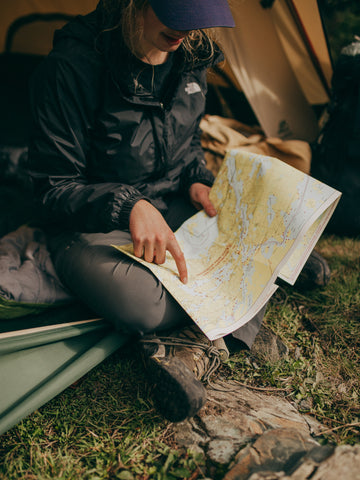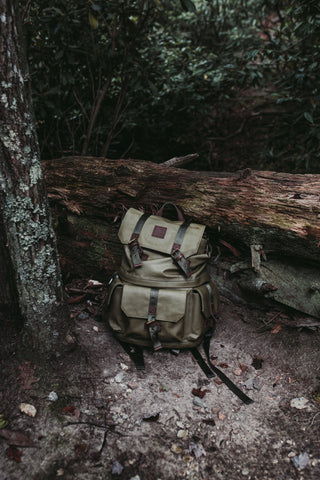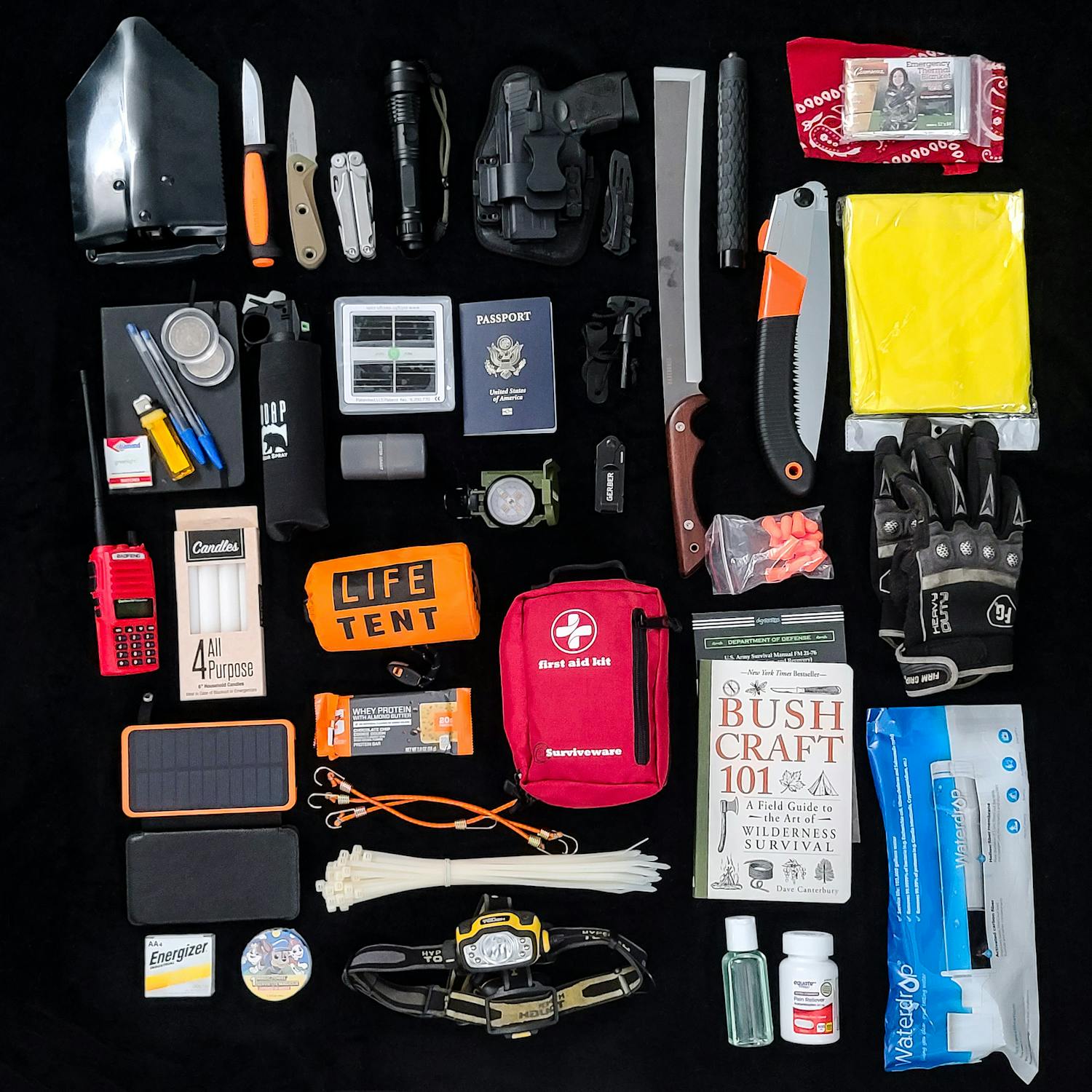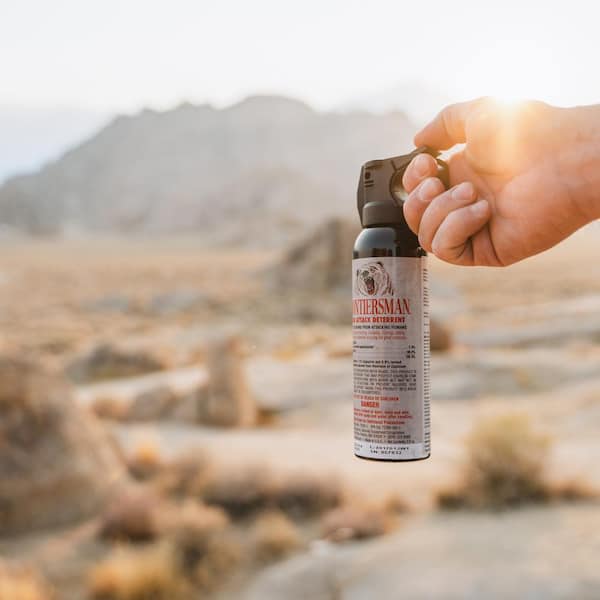Explore the Great Outdoors Prepared: Your Top 10 Hiking Essentials

When Life Gives You Mountains, Put On Your Boots And Hike
There's nothing quite like the thrill of embarking on a hiking adventure, where each step connects you with nature's beauty and serenity. Yet, whether you're a seasoned trekker or just starting to explore the trails, being well-prepared is the key to a safe and enjoyable journey. At RACKTRENDZ, we understand the importance of having the right gear and being prepared, and that's why we've put together this guide on the top 10 hiking essentials.
Hiking isn't just a walk in the park; it's a fantastic way to disconnect from the hustle and bustle of daily life while connecting with the great outdoors. Whether you're planning a day hike or a multi-day trek through rugged terrain, having the right gear ensures you're ready for whatever the trail throws your way. In this comprehensive guide, we'll delve into the must-have hiking essentials that every adventurer should consider packing before hitting the trail. But before you start gathering your equipment, make sure you follow the proper hiking etiquettes.
Hiking Etiquette
Hikes are often riddled with narrow pathways that can make it difficult for people to traverse, especially if more than one person is using, and more so if they are going in opposite directions. Hikers travelling uphill have the right of way, so if you’re returning from your hike and see a fellow hiker on their way up, yield. Move over to the side and let them cross first.
Another important Hiking Etiquette is disposing of waste. While you may not want to harm the environment directly, being a little more conscious of your actions can go a long way. Try to minimize bringing plastic waste on your hikes. Plastic waste in the form of food wrappers tends to be one of the highest contributors to waste on hikes. Another example are cigarettes and alcohol cans/bottles. Cigarette butts are non-biodegradable and leaving them out in the open will only cause more harm to the environment, and the same goes for bottles and cans. Cigarettes also have the potential to cause a forest fire. It is important to note that if you want to carry these on your hike, please also ensure that you dispose of them in a safe container, and carefully discard them when you enter the city.
Beginner Friendly Tips
If you are a complete newbie and don’t have any experience when it comes to hiking then make sure you read these tips thoroughly.
- Fitness level- Assessing your fitness level before you do anything new is generally a good rule of thumb. While you’d want your first hike to be long and memorable, if you are someone who doesn’t exercise a lot, doing shorter trails first is highly recommended. Choosing trails that are ideally between 5-10 km with not a lot of elevation is a great place to start. These beginner trails should typically take around 30 minutes to 1 hour to complete and can be very relaxing.
- Rest- A hike is just a walk with more steps, literally. Hiking outdoors can get very tiring, especially if the weather isn’t the best. It is recommended that you give yourself plenty of rest throughout your hike. Remember it is not the destination but the journey that is important. It’s okay if you’re unable to finish a hike, what most people forget to take into consideration is the walk back. Only hike to the distance that you feel comfortable and take plenty of breathers in. A hike is only as enjoyable as you make it.
- Don’t hike alone- While hiking alone has its many advantages and lets you disconnect, if you are someone who is a beginner, or even hiking a new trail, try to go in groups or bring a +1 with you. Hiking with someone more experienced than you should be your ideal first hike as an experienced hiker can help you take easier trails and also take care of you along the way. Hiking in groups also has several advantages, especially through terrain which has seen animal activity. Hiking in groups also wards off potential predators such as bears.
- Choosing your route- There are usually several trails on a single mountain. Map your route beforehand to make sure you’re on the path that you feel the most comfortable on. If you start off on an easy route but accidentally cross paths on a more difficult route, you’re going to have a hard time. Being mindful and aware of your route and making sure you stick to it will ensure you have a more enjoyable experience.

From sturdy hiking boots that provide support and comfort to lightweight backpacks that carry all your gear, each essential plays a crucial role in enhancing your hiking experience. We'll explore how quality hiking apparel can keep you comfortable in varying weather conditions and why having a reliable navigation tool is essential for staying on track. Additionally, we'll discuss safety gear, hydration solutions, and other items that can make a significant difference in your overall enjoyment and safety during your outdoor adventures. Join us as we take you on a trail to discover the top 10 hiking essentials.
1. First Aid
This one may seem like an obvious mention but it's surprising to see how many people often forget first aid. Your first aid kit should contain the following basic first aid- band-aids, bandages, an antiseptic cream or liquid, some painkillers and over-the-counter ibuprofen, sterilized gauze-pads, scissors and tweezers. Remember to also add some adhesive tape and any other medicine you might need for your specific medical conditions.
2. Footwear
Footwear is incredibly essential. Having the right kind of footwear will make or break your hike. While going for over-the-ankle boots is a standard choice that most people purchase right off the bat, you might want to consider a few things before investing into it. You have to make sure that your footwear is water-resistant. This in our books is an absolute non-negotiable. The other thing to consider before choosing the right pair of footwear is what kind of trail it’s going to be. Some popular trails are more well-kept than others, which means you have to deal with lesser shrubs, sticks, stones and thorns. If that’s the case, having a regular pair of running shoes or something light will be more than enough. For trails that are very intensive and require more than a few hours, it is recommended that you use boots, preferably over-the-ankle ones. Not only do they give you more support on your ankle, but the extended range also helps keep out any unwanted debris.
3. Backpack
Backpacks are a must have on your trail. Even if you are going for a fairly short hike, a backpack can make your life so much easier. Just having a dedicated storage unit where you can keep all your belongings means that you will be spending less time worrying about carrying and more time enjoying the scenic beauty. Investing in a backpack with a lot of storage room is also advisable, especially if you like to go out for longer hikes. Making sure that your backpack is waterproof, or has a cover to prevent water from seeping in is an added bonus but definitely not required. You can also invest in full-length parkas as they tend to cover your bags too, owing to their oversized nature.

4. Fire starter
Whether you’re building a fire to camp out at night, or just want to cook your dinner, or maybe huddle up and beat the cold, a fire-starter is a great tool to have in any situation. They are incredibly lightweight and very easy to use. Within a few minutes, you can essentially start a pretty strong fire as long as you follow the instructions that come with your starter. It is important to note that having additional equipment will help sustain the fire and ensure it keeps burning. You can quickly scavenge for small twigs and dry grass to help get the fire started, but some fire starters come packed with better options such as camphor balls, or fire sheets, flint and steel kits, windproof lighters, waterproof matches etc. Lighting a fire now doesn’t require you to travel back in time just to gain that lost knowledge.

5. Food & Water
Food & water are essential for our survival in our daily life so the fact that you need to carry them for something as strenuous as a hike makes it a very obvious addition in our list. It is always better to carry more food & water than less. Hikers running out of water mid-hike is such a common sight and one that can be easily prevented. You also don’t need to invest in huge gallon size water bottles. Many brands now sell backpacks and hydration bladders together which makes the amalgamation of the two even sweeter. Try to carry more fresh foods, or pre-cooked foods so that you don’t invest your time in preparing it. Another factor to consider is eliminating plastic waste as much as possible. If most of the food that you brought for your hike is wrapped in plastic, make sure you hold on to the plastic waste. Alternatively, in the case of snacks such as chips, cookies etc, emptying them in a container will go a long way in mitigating the risk of plastic waste.
6. Proper clothes and insulation/jackets
It is always good to be prepared before you step out for a hike which is why we recommend that you also carry additional clothes, and dress for the weather. Having a hoodie/jacket or something to keep you warm is a must. Always carry a change of clothes, especially socks! Socks are so important and carrying a fresh pair and changing it mid-hike will actually make you feel fresher. Warm clothes are another important addition. Weather changes can happen in the blink of an eye, even if the forecast says otherwise. The temperature also drastically drops at night, and when you’re out in the wilderness and nothing to break the wind, you’ll be surprised at how cold it can really get.
7. Emergency Tool
Having easy access to emergency tools like a Swiss Knife and lights are essential. Oftentimes on hikes you might encounter a situation which requires you to use a tool. With a Swiss Knife you can minimize your travel load. Swapping out the scissors and tweezers from your first aid kit, you can use the options that the Swiss Knife provides. Lights are a must have on your night/overnight hikes. How do you know where to go if you can’t see? It also acts as a deterrent from animals at night too. Luckily there are simpler and modern solutions so that means you don’t have to lug a big flashlight everywhere. You can use a headlamp or a tiny light that straps onto your backpack which makes it easier to see in the dark.

8. Sunscreen & Bug Spray
When you're out on the trail, nothing can ruin a great hike faster than the relentless assault of the sun's scorching rays and the persistent buzzing of those tiny, bloodthirsty critters. That's where two unsung heroes of hiking come into play: sunscreen and bug spray. These unassuming essentials can make or break your outdoor adventure.
The sun may be the source of life on Earth, but it can also be a formidable adversary when you're out hiking. Prolonged exposure to the sun's harmful ultraviolet (UV) rays can lead to painful sunburns, premature aging, and even skin cancer. Therefore, applying sunscreen should be at the top of your hiking checklist.
Choosing the Right Sunscreen:
SPF Matters: Sun Protection Factor (SPF) measures a sunscreen's ability to shield your skin from UVB rays, which are responsible for sunburn. For hiking, opt for a broad-spectrum sunscreen with an SPF of at least 30.
Water Resistance: Given that hiking often involves sweating and possibly encountering water, choose a water-resistant sunscreen to ensure it stays effective even when you perspire or splash through streams.
Broad-Spectrum Protection: Look for a sunscreen that provides broad-spectrum protection against both UVA and UVB rays. UVA rays can prematurely age your skin, so it's crucial to guard against them as well.
Application Tips: Apply sunscreen generously and evenly 15-30 minutes before hitting the trail. Don't forget to cover often-overlooked areas like your ears, neck, and the tops of your feet.
While hiking, you're not alone in the great outdoors. Mosquitoes, ticks, and other pesky insects are always on the lookout for their next meal - and you don't want to be it.
Choosing the Right Bug Spray:
DEET vs. Natural Alternatives: DEET-based bug sprays are highly effective, but if you prefer a natural option, look for products containing essential oils like citronella, lemon eucalyptus, or lavender.
Duration of Protection: Consider the length of your hike and the bug spray's lasting power. Some products offer protection for several hours, while others may need reapplication more frequently.
Skin Sensitivity: If you have sensitive skin or are prone to allergies, opt for a hypoallergenic bug spray to minimize the risk of skin irritation.
Avoid Contact with Eyes and Mouth: Bug spray is for your skin, not your eyes or mouth. Be cautious when applying it, especially when dealing with children.
9. Bear Spray/Whistles/Bells
Before stepping out into the wilderness you need to remember that you’re going into nature, where the animals are. While easy trails are mostly free from animals because of the number of people that go there, hiking trails that are more hardcore tend to be in the heart of nature and the chance to encounter wildlife is significantly higher. Being well prepared will help you avoid these encounters altogether. Carrying around a bear whistle/bell/spray is a must have when you’re hiking in a place which has seen bear activity. Generally carrying a bell too can be helpful as it alerts animals of your presence and they tend to stay away.

10. Communication Device
A communication device like a radio, phone, flares are incredibly important. In case of emergencies, these instruments will allow you to get in touch with help almost immediately. Setting off a flare at night can reveal your position while devices like radio can help you reach out to people even if you are far away and don’t necessarily have the network coverage on your phone. You can alternatively also add an AirTag on yourself or your belongings to help know where things are.
Bonus
We like bonuses as much as the next person which is why we are adding this product too. While its need is situational, having it on your person will definitely give you the confidence to explore more.
Navigation System- If you are looking to go deep into the wilderness, then it is imperative that you carry a navigation system with you. Having either a map, gps or compass guiding you can be the difference between getting lost and staying on the trail. Always remember to grab some sort of navigation and make sure it works. While having a phone is more than enough, deep into the wilderness when you’re out of battery and network, your phone won’t be of much help. Having a more reliable option is something to keep in mind.

Want to read more? Then we recommend checking out this list of Top 10 Bike Trails in Canada. If you want to shop for outdoor gear then check out our collection here.
